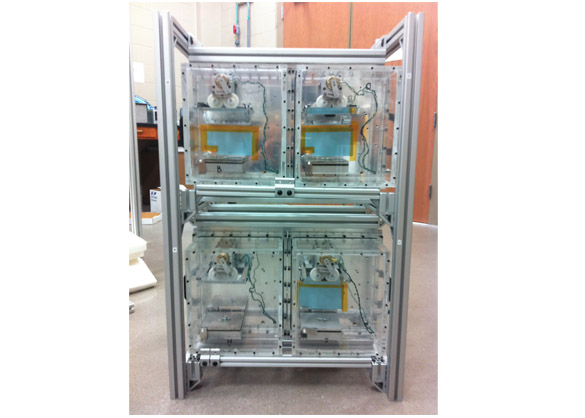PRIME-4.0:Miniaturized and Reusable Asteroid Regolith Microgravity Experiment for Suborbital and Orbital Use
PI: Josh Colwell, Julie Brisset (Co-I), University of Central Florida
PI: Josh Colwell, Julie Brisset (Co-I), University of Central Florida

- TA07 Human Exploration Destination Systems
- TA08 Science Instruments, Observations and Sensor Systems
A vexing problem of experiments with regolith in microgravity is it makes a terrible mess. Following an impact into the surface, for example, any regolith ejected by the impact continues to spread throughout the experiment chamber. This makes it impossible to reuse the experiment chamber until time-consuming and difficult cleaning and resetting has occurred. Thus, with PRIME-3 only 8 experiments could be performed each flight. In addition, the physical scale of PRIME-3 is comparable to a mid-deck locker, making it impractical for multi-use deployment on the space station or in comparable lockers on suborbital launch vehicles.
PRIME-4 will test two new technologies: (1) a new regolith containment system that enables miniaturization of the overall experiment and enables in-flight resetting of the regolith for multiple experiments to be performed on a single regolith sample per flight and (2) a new multi-launcher system that enables multiple impacts, in sequence, to be carried out in a single chamber on a single flight. We will carry forward the technologies successfully tested in PRIME-3.
The new technology can be applied to future experiments to study regolith in microgravity environments on the Space Station or suborbital vehicles.
Technology Details
-
Selection DateREDDI-F1-15 (Nov 2015)
-
Program StatusCompleted
- 2 Parabolic
Development Team
-
PIJosh Colwell
-
PI Organization
-
Co-IJulie Brisset
-
Co-I Organization
-
SponsorNASA
-
More Information

